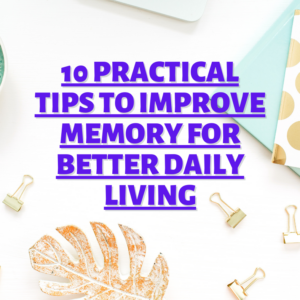Pain relief is a common goal. Pain can range from a mild ache to a severe, debilitating sensation. Fortunately, many effective strategies are available for managing pain. This guide offers various pain relief options and insights into pain management.
Table of Contents:
Understanding Your Pain
Before exploring pain relief options, it’s important to understand your pain. Knowing whether your pain is acute or chronic helps you choose the right strategies. It can be challenging for those dealing with long-term chronic pain.
Acute Pain
Acute pain begins suddenly. It usually lasts less than three months. This type of pain often results from an injury, surgery, or illness. For acute pain from sore muscles, over-the-counter remedies can bring relief.
Chronic Pain
Chronic pain lasts longer than three months. The CDC provides information on how to relieve pain of this type. It can stem from ongoing health conditions like rheumatoid arthritis, nerve damage (neuropathic pain), or fibromyalgia. Sometimes, chronic pain continues even after an initial injury heals. If this describes your pain concern, remember you are not alone.
Pain Relief Options
Many options exist for pain treatment and control. The right method for you depends on the type and cause of your pain. Finding what works best for you might take time. Talk to your healthcare provider about options to help you find pain relief and have more good days.
Medications for Pain Relief
Over-the-counter (OTC) and prescription medications are available for pain. Talk to your healthcare provider to determine the proper dose.
Over-the-Counter Pain Relievers
OTC pain medicines, like acetaminophen (Tylenol) and ibuprofen (Advil, Motrin), help relieve mild to moderate pain. NSAIDs reduce inflammation, which can provide relief for various pain types, including sore muscles. Naproxen sodium is another OTC pain relief medicine to consider.
MedlinePlus offers information on OTC pain relievers. Always follow the recommended dose and talk to your healthcare provider before using them with other medications.
Prescription Pain Relievers
For severe or chronic pain, your doctor may prescribe stronger pain medications. These might include opioids, muscle relaxers (for muscle tension), or other analgesics. While effective, these medications can have side effects and the potential for dependence. For the safest pain medications for you, be sure to talk with a qualified health care provider.
Natural Remedies for Pain Relief
Many natural pain relief methods can help reduce pain and support overall wellness. Talk with your doctor about these remedies, especially if you’re taking other medications, as they can sometimes interact.
Herbal Remedies
Certain herbs, such as turmeric, cloves, and Boswellia, are traditionally used for pain relief. For example, a 2020 study indicated Boswellia can help with osteoarthritis pain. There is additional information about natural pain killers online.
Cannabis-Based Products
Some cannabis compounds, like CBD, show promise for reducing pain. CBD may interact with pain receptors in the brain. This can help provide pain relief, especially when it comes to nerve pain or otc pain.
Mind-Body Therapies for Pain Relief
Chronic pain often involves stress, anxiety, and depression. Mind-body therapies address the mental and emotional aspects of pain. Meditation practices and cognitive therapy could improve coping and wellness overall.
Yoga and Pilates
Yoga and Pilates can improve flexibility, strength, and pain management. These gentle exercises can be helpful additions to a chronic pain management plan.
Meditation
Mindfulness meditation helps change how you perceive pain. This can improve coping and potentially decrease pain intensity. For additional pain management meditation tips, there are resources online you can find.
Cognitive Behavioral Therapy (CBT)
CBT provides tools to cope with the emotional and mental challenges of chronic pain. It helps develop healthy ways to manage pain and make positive changes in your life.
Lifestyle Adjustments
Simple lifestyle changes can play a big role in managing pain. These adjustments can support your overall well-being while reducing pain. Implementing lifestyle adjustments to provide relief may improve your good days.
Physical Activity
Gentle activities, such as walking and swimming, are beneficial for pain management. Consult your healthcare provider about safe activities. This is particularly relevant when pain control becomes a central concern. A physician or physical therapist can suggest exercises for reducing pain while supporting overall health.
Sleep Hygiene
Poor sleep can worsen pain. Create a regular sleep schedule and a relaxing bedtime routine. Better sleep can greatly contribute to pain relief. Those seeking more than just pain relief could find that this could improve coping skills, mood, and wellness overall.
Diet
A healthy, balanced diet is important for wellness and pain relief. Try limiting processed foods, caffeine, and alcohol. Talk to a healthcare provider or registered dietitian about helpful dietary changes.
Seeking Professional Help
It’s important to seek professional help if your pain persists or worsens. The medical care provided can give insight into pain control, managing it and treating pain as safely and as effectively as possible. There are numerous approaches and ways that could provide relief.
Consulting Your Doctor
Talk to your doctor about your pain, including its location, intensity, and any triggers. Be sure to share any relevant medical history. Your doctor can identify causes, rule out serious health issues, and recommend the most effective over-the-counter pain medication or prescription treatment. It can make all the difference when choosing the most effective over-the-counter pain medicine or the safest pain medications.
Pain Specialists
If standard treatments don’t help, consider seeing a pain specialist. These experts have specialized knowledge in diagnosing and treating different pain conditions, which is beneficial for treating pain in various parts of the body.
Support Groups
Connecting with others facing similar challenges can offer support and coping strategies. Pain Concern provides resources and online support groups. Support groups and resources exist to assist in understanding pain.
Conclusion
Pain relief goes beyond simply masking symptoms. It involves improving function and promoting overall well-being. Medications, natural remedies, mind-body techniques, and lifestyle changes offer different paths to pain relief. You don’t have to endure persistent pain alone.
A combination of approaches is often most effective for managing pain long-term. There are resources for acute pain relief. However, finding chronic pain relief or the proper way to relieve pain may be aided by seeking medical advice or utilizing online tools such as a pain toolkit.
Support is available. Talk to your doctor or a healthcare provider to develop a personalized pain management plan. A thorough discussion about what helps relieve pain and the causes of that particular pain concern will be part of determining how to best proceed for pain treatment.

